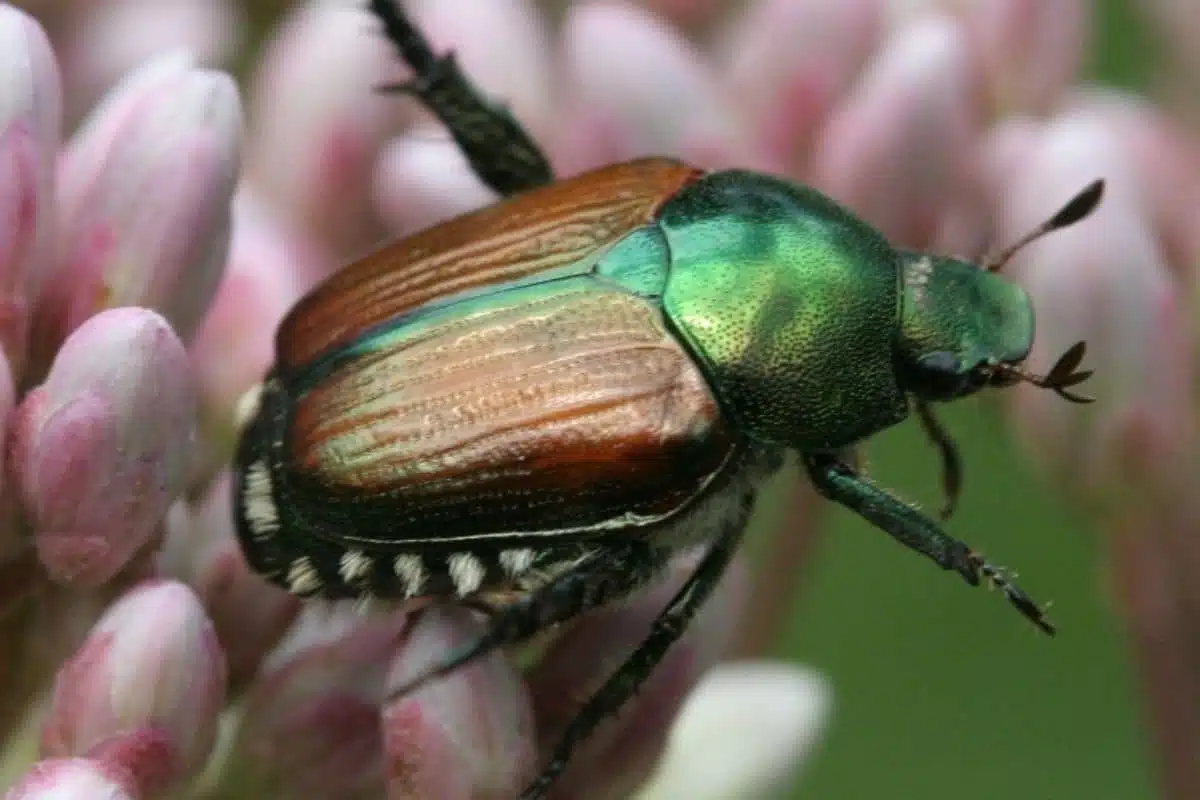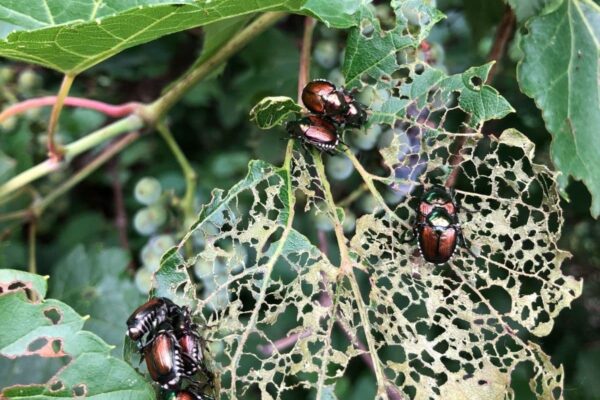Invasive Chafer Beetles vs Japanese Beetles

Posted Date: July 25, 2025
Tags: Blog Post
Here in the Fraser Valley, Invasive European chafer beetles (aka Brown Chafer, Amphimallon majale) have slowly spread into the region in recent years. This has lead to damage to lawns, attracting wildlife like racoons or crows who rip up turf in their search for the grubs. Chafer beetles largely impact residential areas, and pose a nuisance to homeowners.
In 2017, another invasive beetle, Japanese Beetle (Popillia japonica), which causes similar damage to turf and lawn has also been found in the Lower Mainland. Japanese beetle is a CFIA regulated pest since it can severely damage crops, our agricultural industry and food system, with control efforts ongoing in Vancouver since 2018. Luckily, the control efforts in Vancouver have been great success, with no beetles found in 2024!
Along with that, there are soil movement restrictions and guidelines in Japanese Beetle regulated areas, and pheremone traps have been placed throughout the Lower Mainland to monitor the spread. You may have seen these beetle traps around your neighbourhood!
Unfortunately in 2024, a beetle trap in Abbotsford found a single Japanese beetle. But fortunately, there are no current soil movement restrictions in Abbotsford for 2025, with increased trapping/monitoring for beetles happening this summer. However, there are soil movement restrictions in Vancouver, Burnaby, Port Coquitlam, and Kamloops -- The Fraser Valley is right inbetween these areas with Japanese Beetles!
Fraser Valley is a region defined by our agriculture and is one of Canada's most intensively farmed areas! Japanese beetle poses a significant threat to our region, and it is important for us to keep this invasive pest out to protect our industry and food systems.
What's the difference between European Chafer Beetles and Japanese Beetle?
|
|
Chafer Beetle |
Japanese Beetle |
|
Adult Beetle |
|
|
|
|
|
|
|
Grub / Larvae |
|
|
|
|
Looking to compare these two beetles with native beetle look-alikes? ISCBC has a great factsheet for that!
Lifecycle
|
|
Chafer Beetle |
Japanese Beetle |
|
April to June |
|
|
|
July to September |
|
|
|
October to March |
|
|
|
|
Damage Caused
Chafer Beetle
The main damage from Chafer Beetles is done to turf and lawn, as grubs feed on grass roots. The turf ends up feeling spongey underfoot as the grubs create tunnels below the grass, and animals (racoons, crows) start to damage the turf to access and eat the grubs. The Adult beetles do not cause damage.
Photo Credit: City of Vancouver
Japanese Beetle
Both the adult and grubs cause damage. You will see skeletonized leaves on plants from adult beetles, and also turf/lawn damage (similar to chafer beetles) from the grubs.
How can you help?
If you find a Japanese Beetle >>> REPORT IT!
The CFIA will want to know so they can verify what you found, find potential sources, and start control efforts if necessary.
Make sure you do NOT move any dirt or plant material off property.
Please see the CFIA website for Guidelines for Reporting Japanese Beetle or Feeding Damage in BC:
- Collect a Sample and/or Take a photo
- Contact the CFIA as soon as possible 604-292-5742 or BCPF.Japanese.Beetle@inspection.gc.ca.
For Chafer beetles, as a homeowner, you can complete control efforts on your property!
Learn about Chafer Beetle Best Management Practices, and see other helpful guides on treatment options for this pest. Your local municipality may also have further information too:
Keep Learning!
Chafer Beetle
- BC Ministry of Agriculture - Chafer Beetle
- Invasive Species Council of BC - Chafer Beetle
- Metro Vancouver - Chafer Beetle Best Management Practices
- GardenWorks - European Chafer Beetle Tipsheet
Japanese Beetle
- Canadian Food Inspection Agency - Japanese Beetle Factsheet
- Metro Vancouver - Japanese Beetle Guidebook
- Invasive Species Council of BC - Japanese Beetle
- Ohio State University - Japanese Beetle




